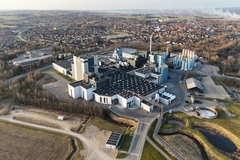
- Industry news
Industry news
- Category news
Category news
- Reports
- Key trends
- Multimedia
Multimedia
- Journal
- Events
- Suppliers
- Home
- Industry news
Industry news
- Category news
Category news
- Reports
- Key trends
- Multimedia
Multimedia
- Events
- Suppliers
Light Technologies Offer Opportunities, But Scientists Warn That More Research Necessary

16 Jul 2015 --- Light-based technologies are emerging as tools to enhance food shelf life and guard against food contaminants but more research needs to be done, warned food scientists at IFT15: Where Science Feeds Innovation.

"Light-based technologies can assist in breaking down bacterial cells in food products and are effective for surface sterilization," said Dr. Kathiravan Krishnamurthy, an assistant professor in the Department of Food Science and Nutrition at the Illinois Institute of Technology. "But the main issue with light-based technology is the penetration depth. We need to make sure every part of the food product sees the light."
The Centers for Disease Control and Prevention estimates each year roughly one in six Americans -- or 48 million people -- gets sick, 128,000 are hospitalized, and 3,000 die of foodborne diseases. According to 2011 estimates, the most common foodborne illnesses are caused by norovirus and by the bacteria Salmonella, Clostridium perfringens, and Campylobacter. Light technology provides a more cost-efficient and effective new way to process foods to effectively inactivate these dangerous microorganisms while maintaining product quality.
"Light-based technologies are very powerful for selected applications but more research needs to be done," Krishnamurthy said, adding they've mainly been used in non-food applications. "These technologies are still in their infancy."
Tatiana Koutchma, a research scientist with Agriculture and Agri-Food of Canada, has been exploring a new application by experimenting with UV purification to extend the shelf life of cold-pressed juices as well as iced teas, soft drinks, syrups, milk, cheese and calf milk.
"It's an alternative to pasteurization and ESL [extended shelf life] method for juices, milk products, liquid sugars, liquid ingredients, raw, and finished food products," Koutchma said. "More research is needed for milk, fresh juices and wines."










